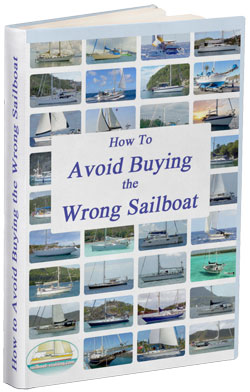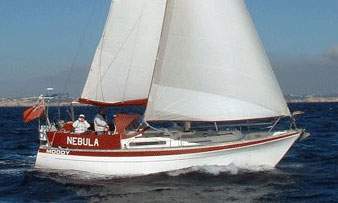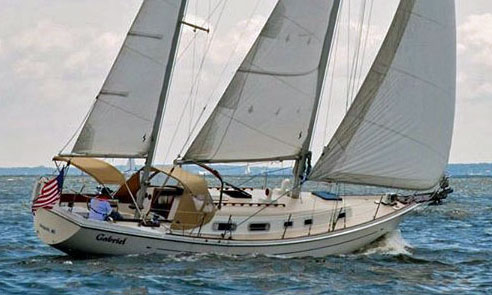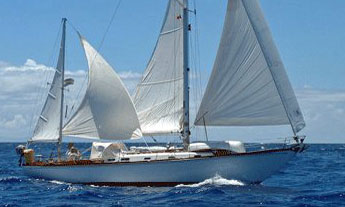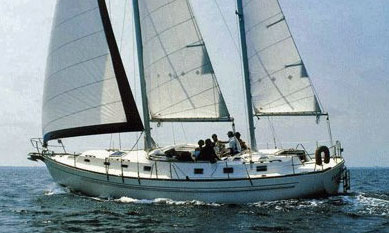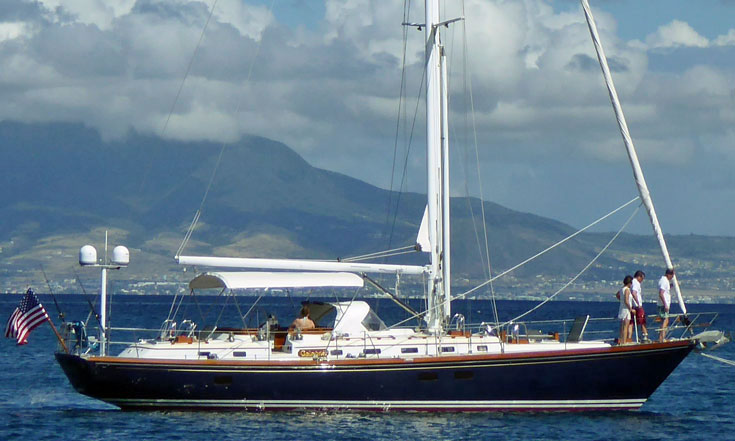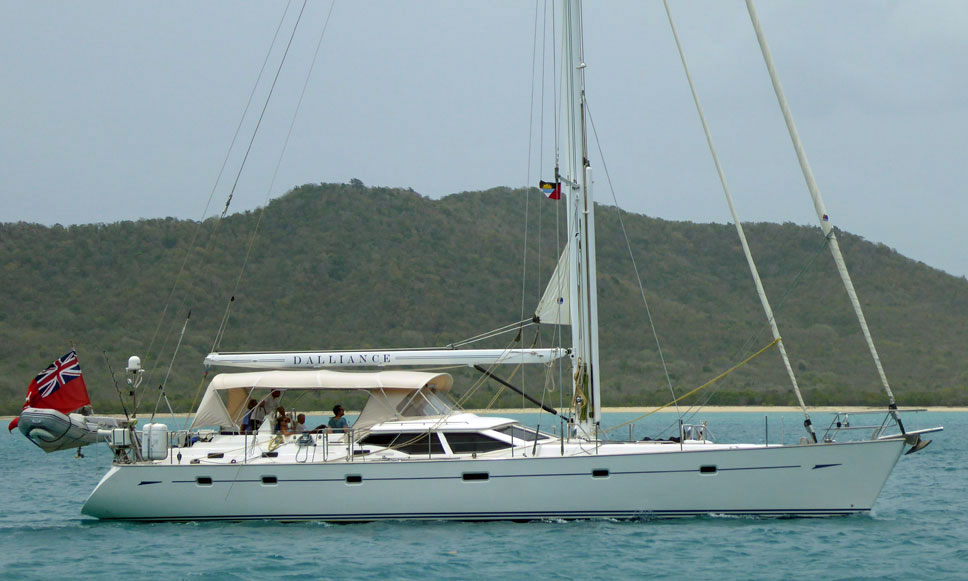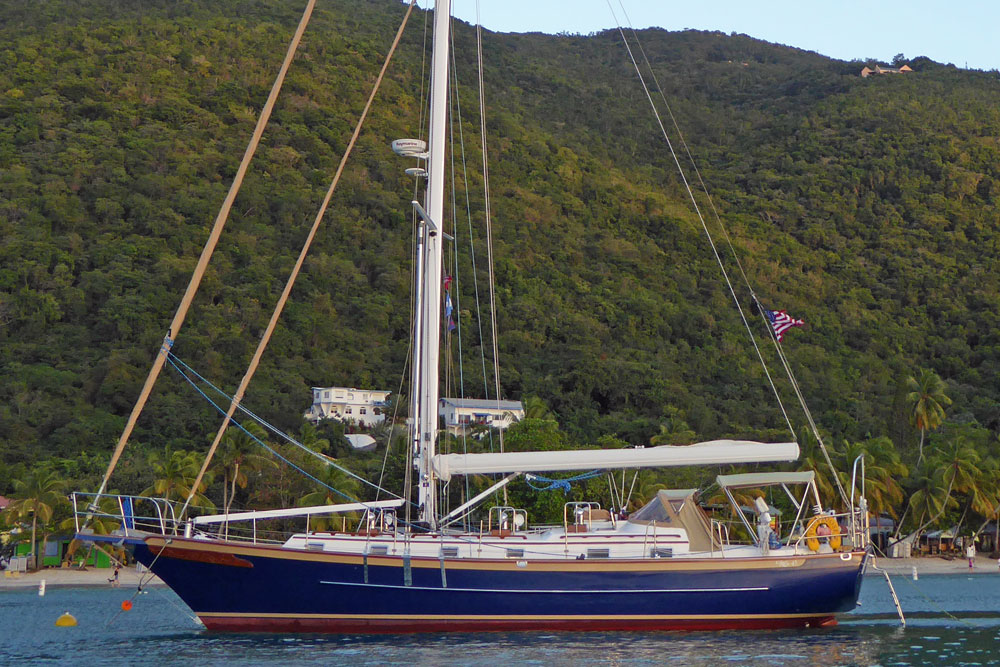- Home
- Cruising Yachts 35' to 40'
- Cabo Rico 38
The Cabo Rico 38 Sailboat
Specs & Key Performance Indicators
The Cabo Rico 38 sailboat, a heavy-displacement cutter, was designed by Bill Crealock and Dennis Garrett and manufactured by Cabo Rico Custom Yachts Inc in Costa Rica throughout the years 1977 to 2005.
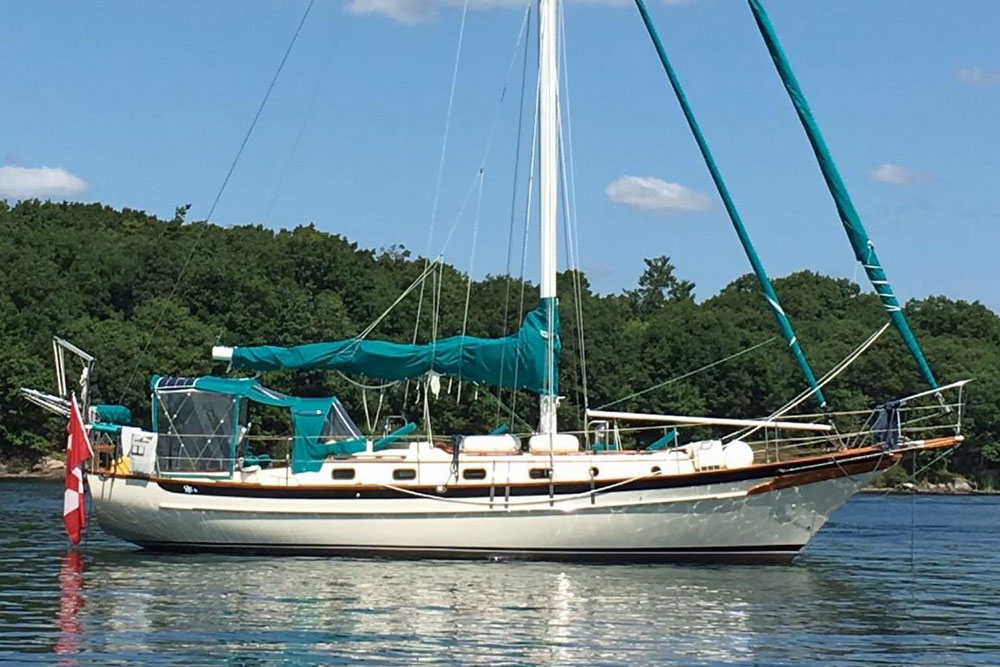 Cabo Rico 38
Cabo Rico 38Published Specification for the Cabo Rico 38
Keel & Rudder Configuration: Long keel with keel-hung rudder
Hull Material: Fiberglass (GRP)
Length Overall: 11.6m (38'7")*
Waterline Length: 8.9m (29'3")*
Beam: 3.5m (11'6")*
Draft: 1.5m (5'0")*
Rig Type: Cutter
Displacement: 9,525 kilograms (21,000 pounds)*
Ballast: 3,175 kilograms (7,000 pounds)*
Sail Area: 89.4m2 (964ft2)*
Water Tank Capacity: 568 liters (150 gallons)
Fuel Tank Capacity: 208 liters (55 gallons)
Hull Speed: 7 knots
Designer: Bill Crealock & Dennis Garrett
Builder: Cabo Rico Custom Yachts Inc.
Year First Built: 1977
Year Last Built: 2005
Number Built: 200
* Used to derive the design ratios referred to later in this article - here's how they're calculated...
Sail Areas & Rig Dimensions
- Mainsail Area: The area is around 40.9m2 (440ft2).
- Headsails Area (Genoa and Staysail): The combined area is about 48.5m2 (524ft2).
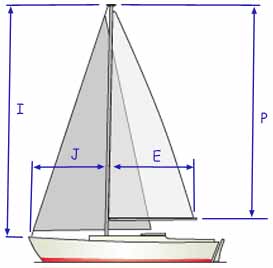 Sail Areas & Rig Dimensions
Sail Areas & Rig Dimensions- I (Foretriangle Height): 44 ft (13.4m)
- J (Foretriangle Base): 18.5 ft (5.6m)
- P (Mainsail Luff): 38.8 ft (11.8m)
- E (Mainsail Foot): 14.7 ft (4.5m)
Published Design Ratios
The Key Performance Indicators (KPIs)
- Sail Area/Displacement Ratio (20.5): This ratio suggests that the Cabo Rico 38 has a moderate amount of sail area relative to its displacement, which indicates a balance between power and manageability. It means the boat can perform well in a variety of wind conditions, providing enough sail power for good speed while remaining manageable for cruising.
- Ballast/Displacement Ratio (37.1%): This indicates the boat has a substantial amount of ballast relative to its overall displacement, which enhances stability. A higher ballast ratio typically means better stiffness, allowing the boat to resist heeling (tilting) under sail. This contributes to a safer and more comfortable ride, particularly in rough seas.
- Displacement/Length Ratio (375): A higher ratio like this suggests that the Cabo Rico 38 is a heavy-displacement boat. This generally translates to a smoother and more comfortable motion through the water, making it well-suited for long-distance cruising. It may not be as fast as a lighter boat, but it offers a sturdy and stable platform for extended voyages.
- Comfort Ratio (39.4): This ratio indicates how comfortable the boat will be in rough conditions. A higher comfort ratio, like the one the Cabo Rico 38 has, suggests that the boat will have a gentle, easy motion at sea, reducing the likelihood of seasickness and fatigue over long passages.
- Capsize Screening Formula (CSF) (1.7): The CSF value suggests how resistant a boat is to capsizing. A value of 2.0 or lower is generally considered good for bluewater cruising. With a CSF of 1.7, the Cabo Rico 38 is well within the safe range, indicating that it is very capable of handling open-ocean conditions and less likely to capsize.
Overall, the Cabo Rico 38's design ratios reflect its intended purpose as a comfortable, stable, and capable cruiser, well-suited for long-distance and bluewater sailing.
It may not be the fastest boat on the water, but it provides a safe and enjoyable sailing experience for its crew.
The above design ratios are fairly typical for a heavy displacement sailboat of this type and can be interpreted to provide an indication of such a vessel's likely sailing characteristics - however they have their limitations:
- The design ratios are static measurements which don't account for dynamic factors like wave action, wind gusts, or crew actions.
- They simplify complex interactions into single numbers, which can be misleading. Real-world performance is influenced by a multitude of factors that these ratios can't fully capture.
- The context in which the boat is intended to be used (e.g., coastal cruising vs. offshore racing) can greatly affect how these ratios should be interpreted.
Consequently, while these ratios provide valuable insights into the theoretical performance characteristics of a sailboat, they should be used as part of a broader assessment that includes practical experience, sea trials, and expert advice.
Here's what Jordan Yachts had to say about the Cabo Rico 38...
More Specs & Key Performance Indicators for Popular Cruising Boats
This article was written with the assistance of Gemini, a large language model developed by Google. Gemini was used to gather information, summarize research findings, and provide suggestions for the content and structure of the article.
Other sailboats in the Cabo Rico range include:
Recent Articles
-
Modern Boat Electronics and the Latest Marine Instruments
Dec 20, 25 05:27 PM
Should sailboat instruments be linked to the latest boat electronics as a fully integrated system, or is it best to leave them as independent units? -
Hans Christian 43: Classic Bluewater Cruiser & Liveaboard Sailboat
Dec 10, 25 04:37 AM
Explore the Hans Christian 43: a legendary heavy-displacement, long-keel sailboat. Read our in-depth review of its specs, design ratios, and suitability for offshore cruising and living aboard. -
Planning Your Sailboat Liveaboard Lifestyle: An Ocean Sailor's Guide
Dec 06, 25 05:18 AM
Seasoned sailors share their methodical risk analysis for planning a secure Sailboat Liveaboard Lifestyle, covering financial, property, and relationship risks.
